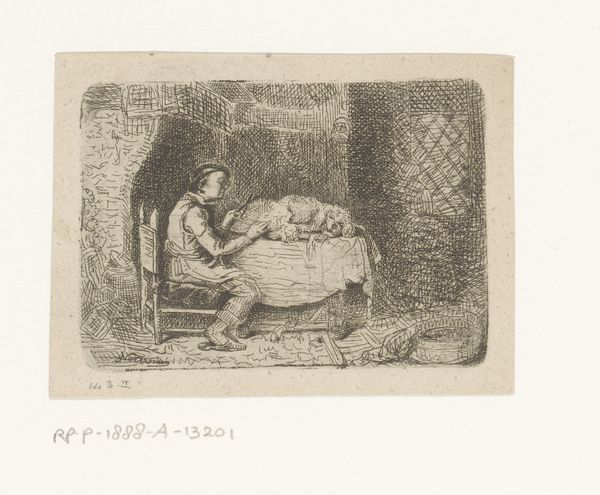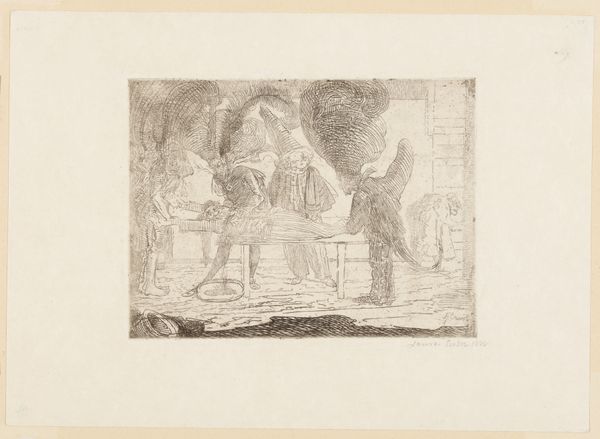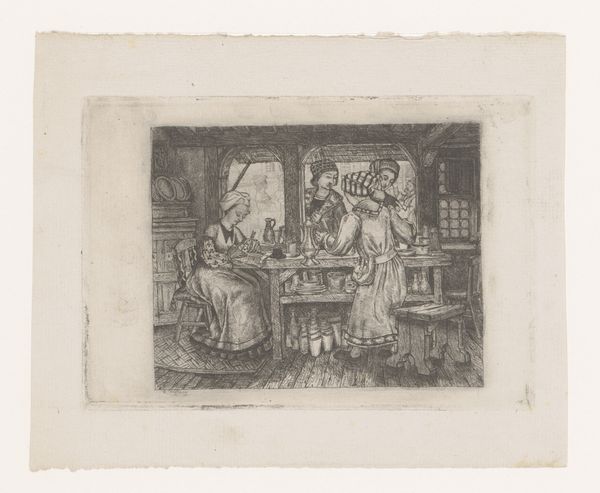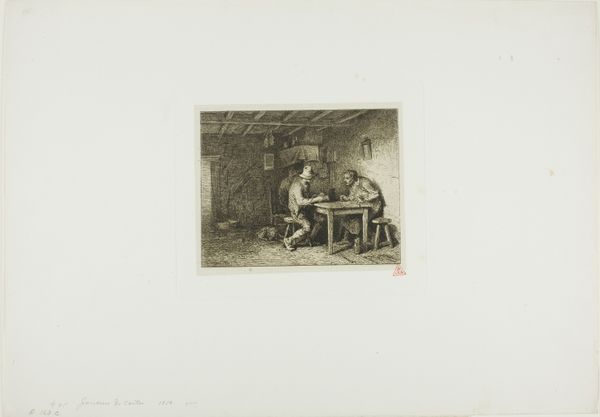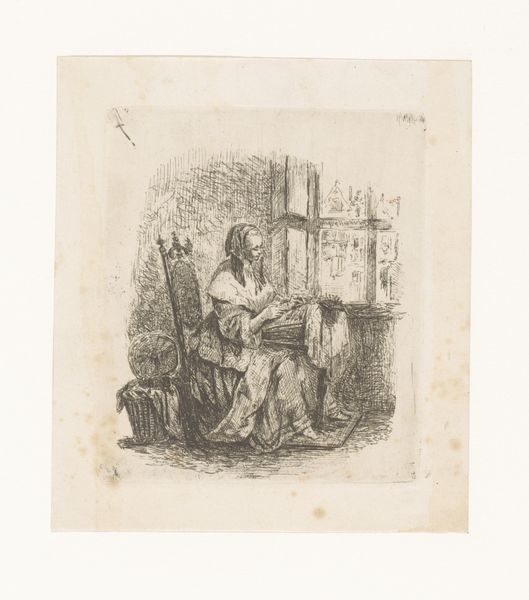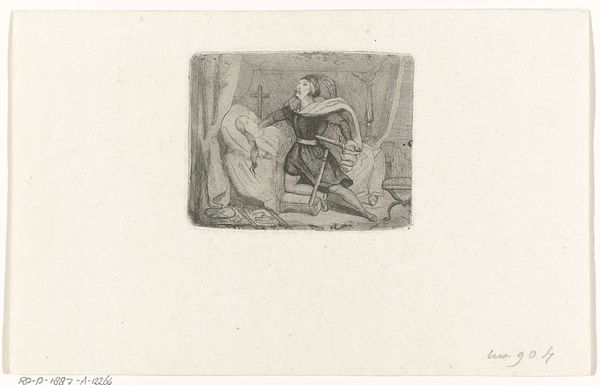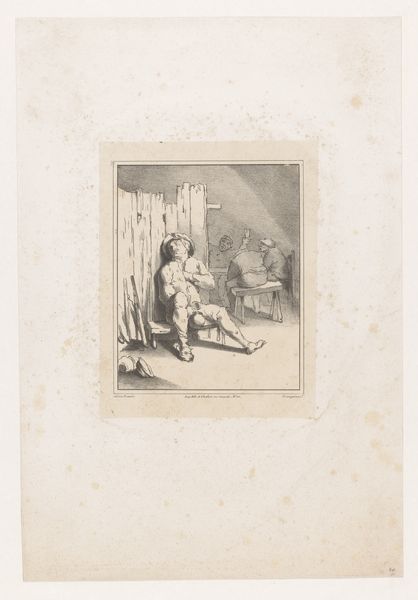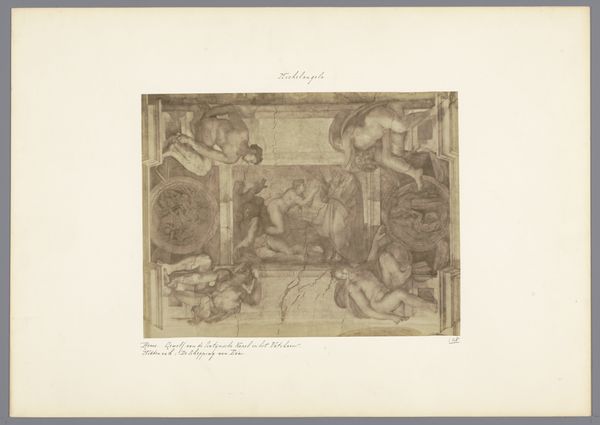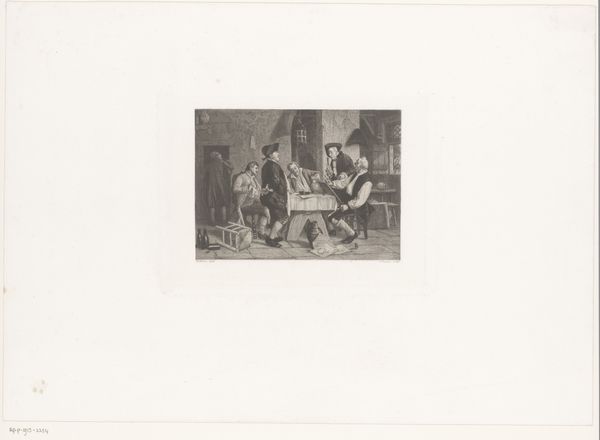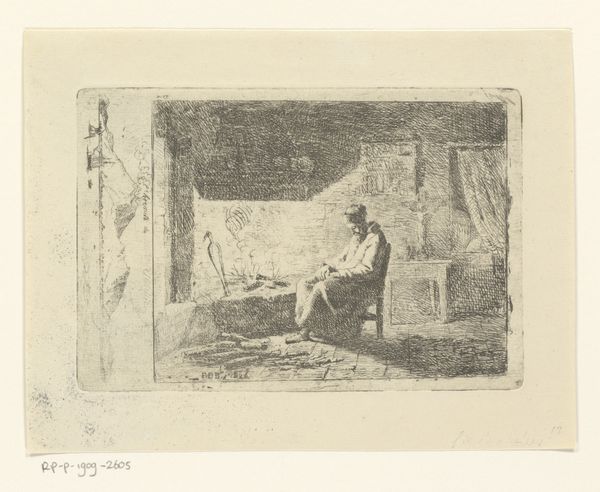
drawing, print, paper, ink, engraving
#
portrait
#
drawing
#
ink paper printed
# print
#
dog
#
old engraving style
#
figuration
#
paper
#
ink
#
genre-painting
#
engraving
#
realism
Dimensions: height 66 mm, width 92 mm
Copyright: Rijks Museum: Open Domain
Curator: Oh, this print is just delightful! I am struck by the gentle, almost sleepy mood it evokes. The close, muted tones create such an intimate space. Editor: Yes, it’s an engraving titled "Hondenscheerder knipt een hond," or "Dog Clipper Cuts a Dog," dating from somewhere between 1818 and 1863, created by Emanuel Noterman. What I find immediately compelling is the exploration of labor within domestic space. Curator: Labor, yes, but so human! Look at the way the dog reclines, seemingly trusting. There's a peculiar intimacy there. The space feels…lived-in, comfortable. Editor: Absolutely. And it invites questions about class, accessibility, and the relationship between humans and animals in labor contexts. The composition—with the figure positioned centrally and other domestic staff to the right, rendered less distinctly, draws a subtle yet palpable boundary around privilege. How labor is viewed depends heavily on who performs the labor and how power is distributed. Curator: That's a good point! I can't help but focus on the dog's languid pose— it evokes feelings of safety, tenderness... Almost makes you think the print serves as a window into our own vulnerabilities when we feel like someone we trust is taking care of us. I wonder what sort of relationship this is based on trust. Editor: The presence of the dog could also suggest commentary on consumerism and how companion animals became entwined within systems of economic exchange. Who has access to care determines power relationships—something we must not detach from issues regarding class inequality or labor dynamics, regardless of the year in which they are executed, especially artworks with quotidian and bourgeois contexts. Curator: You're right! But beyond the societal aspects, this print feels surprisingly modern in its tenderness. To catch this little domestic moment and distill it... there is the human connection, and at the heart of it is a silent but undeniable agreement: protection on both sides, maybe even tenderness. Editor: That makes me consider our engagement as the art world evolves, or art itself changes through societal lenses. I realize that art, like dogs getting trimmed up here, becomes more fascinating. Thank you. Curator: Indeed. Maybe looking closely gives way to deeper thinking overall; after all, aren't we all just striving for moments of care and trust amidst...chaos, which are a big source of reflection to this day? I learned from that today; thanks again.
Comments
No comments
Be the first to comment and join the conversation on the ultimate creative platform.
